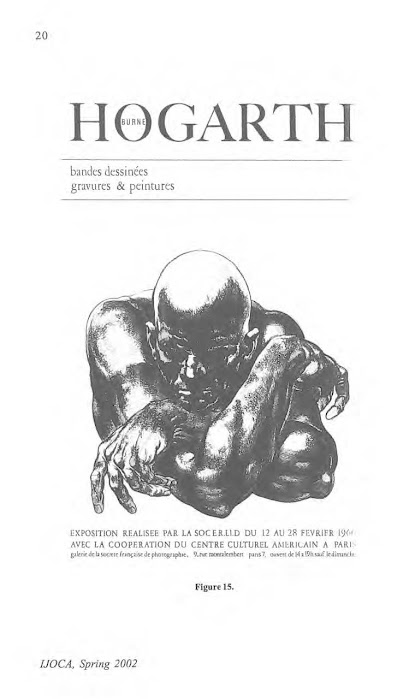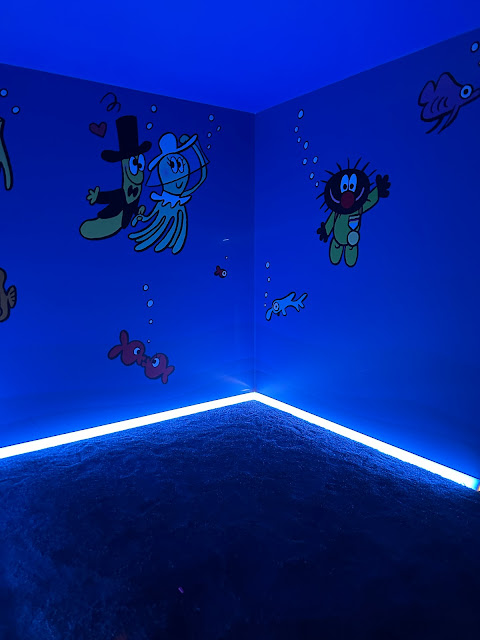 Reviewed by Christina M. Knopf
Reviewed by Christina M. Knopf
Simon Appleford. Drawling Liberalism: Herblock’s Political Cartoons in Postwar America. Charlottesville: University of Virginia Press, 2023. https://www.upress.virginia.edu/title/5814/
The
political cartoons of Herbert Lawrence Block, professionally known as“Herblock,” influenced leaders, shaped political discourse, and had a lasting
impact on public memory. Herblock’s career, Simon Appleford notes, “lasted
seventy-two years and encompassed the presidencies of thirteen men, from
Herbert Hoover to George W. Bush” (1-2). Born in 1909 in Chicago, Block worked there
and then in Cleveland as an editorial cartoonist until joining the Army in
World War II. Following his discharge, he worked for the Washington Post
for an amazing 55 years until his death in 2001. Appleford claims in Drawing
Liberalism that Herblock was a significant advocate for, and voice of,
postwar liberalism – one that is largely neglected in scholarly attention to
liberal intellectuals of the era. Drawing Liberalism thus focuses on
“how Block’s cartoon’s [sic] reflected and shaped liberalism in the
domestic sphere” (15).
The
book is organized into six chapters, prefaced by a brief introduction, and
followed by a short epilogue. Forty-three Herblock cartoons illustrate the
chapters, assisting readers’ understanding of Herblock’s style. The
introduction establishes the significance of political cartooning in history
and public discourse, while providing a brief overview of some of their
rhetorical features. However, comics studies and political communication
scholars with keen interests in the visual and rhetorical devices employed by
cartoonists will find uneven attention to those features in the rest of the book.
Appleford is a historian whose focus is on Herblock’s articulation of, and
contribution to, postwar liberal ideology, not an art historian.
The
first chapter provides a brief biography, outlining Herblock’s journey to the Washington
Post in 1946, highlighting the influences and experiences that shaped
Herblock’s politics and artistry. Chapter 2 focuses on Herblock’s work
throughout the Red Scare of the 1940s and 1950s. Appleford introduces the
chapter as one that “examines the visual devices that Block used to persuade
his audience” that the fearmongering of anti-Communists was as much a threat to
the country as Communist subversion. Some of the “visual devices” discussed
include Herblock’s use of sports metaphors, allusions to Greek mythology, everyday
scenarios with which readers could identify, and his development of the
character of Mr. Atom – an anthropomorphic atom bomb. Appleford further
identifies three categories of Herblock cartoons that represented threats to
Americans’ civil liberties: cartoons that depicted the House Un-AmericanActivities Committee (HUAC) as vacuous and vindictive; cartoons that depicted
HUAC members as overzealous and malicious; and, cartoons that depicted HUAC “in
activities that struck against the very symbols of American democracy” (61).
Indeed, as Appleford discusses in the chapter, Herblock is largely credited
with coining the term “McCarthyism” after Senator Joe McCarthy, who he drew
with a “thug-like, almost Neanderthal depiction [that] would become a recurring
theme” (69) of Herblock’s characterization of opponents to civil liberties and
civil rights.
In
chapter 3, Appleford examines Herblock’s handling of segregation and racial
violence, arguing that “Block identified the fight for African American rights
as one of the most important social and political movements of the
mid-twentieth century,” (16) – but one in which he was more concerned about
white intolerance and bigotry than the Black experience. Appleford writes, “By
privileging the actions of white elites […] at the expense of other
participants – most notably of the African American community but also of women
and children – Block gave his readers a significantly distorted picture” of
events (87) – but he also brought the ideal of racial equality as fundamental
to American values “to the attention of a much larger audience than might
otherwise have been exposed to ideas of liberal intellectuals” (90). And the
white Southerners drawn in Herblock’s cartoons took on the signature thug-like
appearance that he used for depicting enemies of liberalism.
Chapter
4 argues that Herblock’s “cartoons serviced as proxies in the early stages of a
national debate over the so-called culture wars that has characterized much of
American political discourse for the past fifty years” (16). It begins with
Herblock’s response to the Kennedy assassination and the hostility with which
an anti-gun cartoon was received by many readers – which Appleford describes as
a reflection of the early stages of the “culture wars.” The chapter then looks
at Herblock’s cartoons during the Kennedy years, noting that the artist “drew
inspiration from the self-styled rhetoric of the campaign” to depict Kennedy as
“a courageous pioneer or clean-cut cowboy” (120). The reader is left to
fill-in-the-blank, that such imagery reflected Kennedy’s use of the frontier
metaphor. The chapter also examines Herblock’s disparagement of the right-wing
John Birch Society and Daughters of the Revolution, where he again used his thuggish
depictions to suggest the “presumed lack of education and propensity for
violence” (127) of their members. Appleford connects such imagery to Herblock’s
belief in an urban majority as more representative of American ideals than the
rural minority, with which he connected a conservative ideology that was
antithetical to American democracy,
Chapter
5 is concerned with Herblock’s lackluster response to the emergence of the New
Left in the 1960s – one that “failed to give any legitimacy to protest
movements” (16). Here, discussion turns again to Herblock’s handling of civil
rights and his tendency to privilege the actions of, and impact on, whites.
Appleford also discusses Herblock’s relative lack of attention to women’s
rights issues as “a reflection of postwar liberalism’s own lack of interest in
the questions [compared to] civil rights” (165). Appleford further notes
Herblock’s reliance on the major tropes of “dangerous seductress, innocent
victim, or as a symbol of American values” (167) – though such visual metaphors
were infrequently related to women’s issues or civil rights, such as the
Vietnam War caricatured and embodied as the mistress of the Lyndon Johnson
administration. Overall, Appleford demonstrates in this chapter that Herblock’s
lack of representation for women’s and other rights-based movements that
emerged in the 1960s suggested an unwillingness to engage with critiques of
“the patriarchal institutions and cultural practices of postwar liberalism”
(169).
The
final chapter focuses on the subject with which Herblock is most strongly
connected in public memory – his portrayals of Richard Nixon. Appleford seeks
to show how Herblock’s cartoons were pivotal in defining the public perception
of Nixon, transforming him from a young congressman considered handsome and
principled, “into an archetype of corruption, a chameleon whose position on the
issues of the day changed based solely on political expediency, and whose
features became synonymous with the abuse of power” (16). Throughout the
chapter, Appleford frequently discusses the prominent “5 o'clock shadow” in
Herblock’s caricature of Nixon – one that was a controversial point of
contention for the president and his supporters. It is, however, almost by
accident in passing that Appleford recognizes that the darkened face visually
represents “the darker side of Nixon’s character” (206). Other common
depictions of Nixon by Herblock as a vulture or undertaker and as a man who
wore many masks. Perhaps the most insightful part of the chapter is Appleford’s
exploration of Herblock’s cartoon coverage of Watergate, for which Herblock frequently
used water imagery. Washington Post owner Katherine Graham noted that
Herblock’s cartoons were well ahead of the news on understanding the
significance of the Watergate break-in, and Herblock worked closely with reporters
Bob Woodward and Carl Bernstein in making sense of the investigation.
The
book’s epilogue briefly examines some of Herblock’s post-Nixon work to
underscore Herblock’s lifelong commitment to democracy by using his pen to
pressure the people and the government to “do the right thing.”
Throughout
the book’s 234 pages, Appleford considers the ways in which Herblock “was
attempting to tread the fine line between caricature and stereotype” (41). He
rarely depicted African Americans in his cartoons – and some of those
depictions relied on minstrel Black face features and some only showed the
characters from the back. He also typically depicted women in traditional
gender roles, as faces in a crowd, as members of a family, or in
gender-appropriate professions such as teacher or nurse. Appleford particularly
notes Herblock’s use of literary and pop-cultural allusions: Alice in
Wonderland and Alice Through the Looking Glass. Snow White. The
Wizard of Oz. Poltergeist. Harvard University’s alma mater “Fair
Harvard" (although Block never finished college). Readers would be well-advised to look through the end notes for
additional insights.
Appleford
deftly weaves the work of Herblock into the larger political history of the
United States. As such, the book may be a great resource to any scholar looking
to better understand the zeitgeist of postwar America. One weakness for
classroom or reference use, however, is that chapters do not use subheadings to
help organize or clarify the different topics or themes encompassed in each.
In
the book’s focus on Herblock as an intellectual of postwar liberalism, Appleford
is very successful. He carefully situates and explains the arguments advanced
by Herblock in relation to other liberal thinkers of the time. Some attention
to other cartoonists of the era might have also been informative, especially
when Appleford presents perspectives on Herblock’s engagement, or lack of, with
particular topics and imagery, to offer readers a sense of whether Herblock’s
handling of these was unique or not. Nonetheless, readers are sure to gain a
new understanding of the current political milieu through Appleford’s history. His
attention to not only Herblock’s arguments, but also to the controversy they
generated provides historical perspective on present day partisanship within
the culture wars.
Christina M. Knopf, PhD is a Professor &
Presentation Skills Coordinator in the Communication and Media Studies
Department of SUNY Cortland.
































